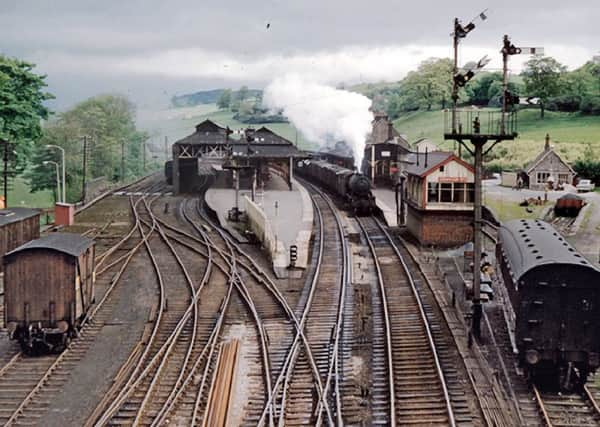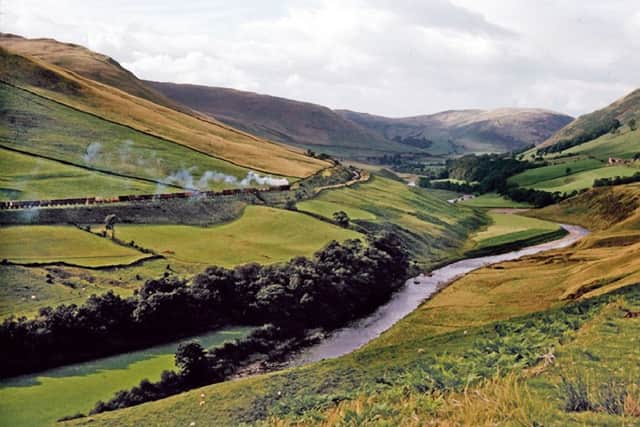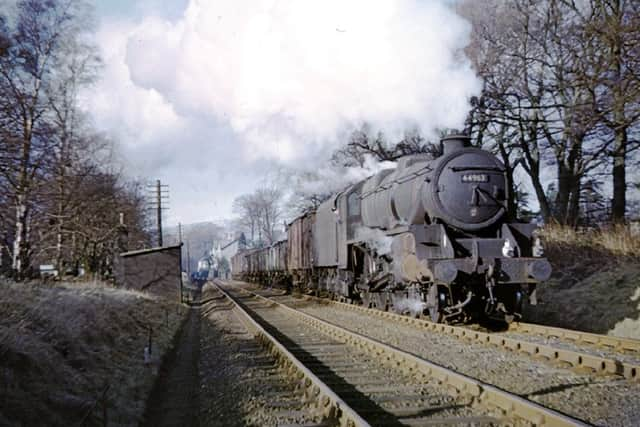Remembering the last days of Lancaster steam


As the dominion of steam traction on British Railways contracted to the area from Crewe to Carlisle in the mid-1960s I, who had moved to Kendal from electrified Kent, realised I had a grandstand seat in the final theatre of steam.
In those last years of commercial steam traction on British Railways I found I could hitch a ride on the footplate of a steam locomotive almost anywhere in the north west.
Advertisement
Hide AdAdvertisement
Hide AdThere was no more exciting and satisfying way to travel than on a coal-fed iron horse with its barking blastpipe and pulsating motion, bells and buzzers foretelling the signals ahead and the fireman shovelling coal from the tender and swinging it into the hungry furnace.


I was the third man on the footplate, clinging on to the cab side as the floors of the locomotive and tender moved different ways, and I was constantly regulating the volume control on my tape recorder for the high decibel rumbling, grinding, squealing, clattering and wheezing.
There was also no more exciting way, especially from the aural aspect, of watching the trains go by than from a signal cabin with its various bell codes and slamming levers, and I was accorded hospitality in every cabin I visited.
I was bent on recording the whole repertoire of sounds of the remaining steam passenger and freight operations on British Railways in Lancashire, Yorkshire, Westmorland and Cumberland in 1967 and 1968 while there was still time.
Advertisement
Hide AdAdvertisement
Hide AdThis repertoire, from the station announcer to the crew coaling the engine on shed after a day’s duty, was music to my ears.


I was lucky to meet friendly railwaymen who willingly facilitated me in my quest to record these sounds for posterity in those last two years of steam. These recordings, now on narrated compact disc programmes, bring the steam era back to life in a way that photographs can never do.
My book is based on extracts from my descriptive diaries of the period, written straight after the events with the details fresh in my mind. They conjure up a vivid word picture and atmosphere that would be impossible to recall from memory today. Without those contemporary writings I could never have attempted to write this book.
I liked to hear the locomotive whistles echoing in the fells, their clanking side rods and squealing flanges in the freight yard and shunters uncoupling and coupling up the wagons.
Advertisement
Hide AdAdvertisement
Hide AdI communed with the locomotives to capture their more intimate sounds. I photographed and recorded steam from the trackside, from the leading coach, from the brakevan on freight, from the locomotive, from the signal cabin, under the coaling tower and even inside a tunnel.


I recorded interviews with signalmen on the high and lonely reaches of the Settle and Carlisle line, where operations were dogged by high winds, heavy rainfall and snowdrifts, and I recorded from Carnforth on the footplate of the last steam freight over Shap Fells to Carlisle.
My programme Steam Journey Through Lancashire was recorded from the leading coach and locomotive alternately on sections of one of the last runs of the Belfast Boat Express from Manchester Victoria to Heysham Harbour. This was the very last regular steam passenger service on British Railways.
At Bolton Trinity Street I captured all the traditional sounds of a stop in a large station: the heavy thud of those old carriage doors slamming, the deep Boltonian voice of the station announcer, porters talking on the platform, a mail trolley trundling by on iron wheels, the porters loading mailbags into the mail van, the guard blowing his whistle, shouts of ‘right away’, the masculine deep whistle from the locomotive and the echoes against bridges and lineside buildings as it snorted out of the station.
Advertisement
Hide AdAdvertisement
Hide AdWhen I recorded a steam run down the Windermere branch I asked the porter at Oxenholme to do his traditional call in his stentorian voice as the train rolled into the station. He put on a wonderful performance for me: ‘Windermere train. Kendal, Burneside, Staveley, Windermere. Oxenholme, Oxenholme, Oxenholme. Oxenholme, next stop Kendal”.


I was on hand to record classic wheel slip when a locomotive took four minutes to start moving out of Kendal freight yard in the early morning dew.
I sometimes rose at four o’clock in the morning in my quest for steam and twice rode the footplate on freights over Shap through the night before going to the office next morning.
It is interesting to note that, although BR promised to dieselise the Windermere branch from March 1, 1965, there were so many breakdowns of diesel multiple units and diesel freight locomotives that there were hundreds more steam workings in the next three years. The last steam passenger train on the branch ran on July 29, 1968, the last steam freight to Windermere on August 2nd and the last steam shunt at Kendal freight yard was on August 3, 1968, the last day of regular steam working on BR.
This was Britain’s last country branch line in steam.
Advertisement
Hide AdAdvertisement
Hide AdThat night the very last steam passenger trains of the era were the 8.50pm from Preston to Blackpool and the 9.55pm from Preston to Liverpool Exchange. The final three steam loco-sheds, at Rose Grove, near Burnley, Lostock Hall, near Preston, and at Carnforth, closed that weekend.
The steam age was over but some years later steam returned with tourist trains on preserved railway branch lines with a 25mph speed limit and steam excursions on BR metals but I never recorded these as they lacked the authenticity and urgency of commercial railway operations.
While the finale of BR steam is my main theme, my book extends to the sights and sounds of steam colliery railways, the Isle of Man Railway, LNER paddle steamers on the Humber and Clyde, Gardner-engined buses with conductors in Chester and Midlothian, Blackpool trams, and vintage electric trains on the Lancaster - Heysham line, at Southport, Birkenhead, Manchester, London and Glasgow, and on the Manx Electric Railway and the Chicago, South Shore and South Bend Railroad in Indiana.
Echoes of Steam and Vintage Voltage is published by Silver Link in hardback priced £25. The book spans the period from 1949 to 1981 and the text is mainly from Cedric’s diaries and letters from 1955 onwards.